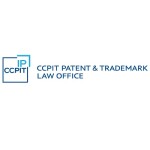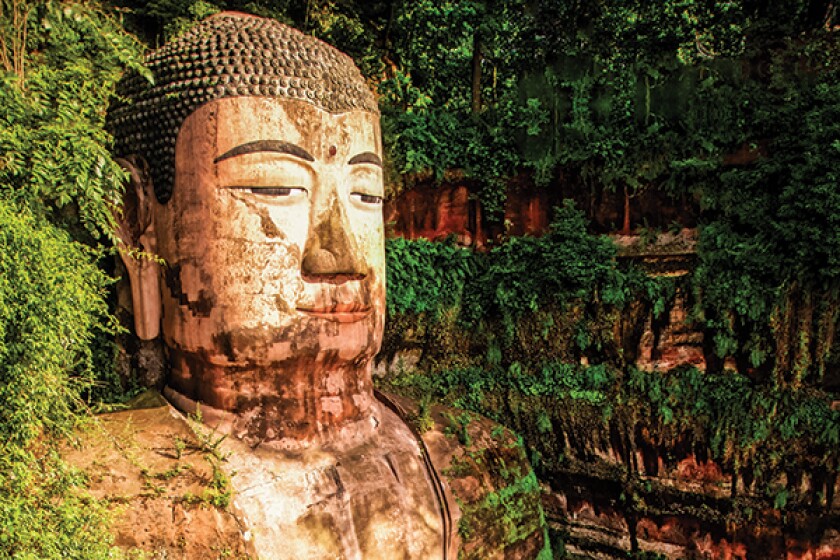It is generally considered that the Anti-Unfair Competition Law of the People's Republic of China offers supplementary protection to IP. The Anti-Unfair Competition Law also regulates the unfair competition acts in the field of IP, thus it could be applied against abuse of IP rights.
Scope of protection
As defined in Article 2 of the Anti-Unfair Competition Law, the act that "violates this law, disrupts market competition order or infringes the legal rights and interests of other business operators or consumers during production or distribution activities" belongs to the Unfair Competition Act.
It covers the "act of confusion, commercial bribery, false or misleading commercial promotion, infringement on trade secret, prize-giving sales, fabricating or disseminating false or misleading information to damage the reputation of a competitor and the online market competition." There is also a catch-all general clause so that the Unfair Competition Act under the definition of Article 2 could all be dealt with under the framework of the Anti-Unfair Competition Law.
Regulations in China
According to Article 123 of the Civil Code of the PRC, IP rights are the proprietary rights enjoyed by right owners in respect of the following objects: works, inventions, utility models, and designs; trademarks; geographic indications; trade secrets; layout designs of designs of integrated circuit; new varieties of plants and other objects specified by laws.
In China, there are some concrete IP laws, such as the Copyright Law, the Patent Law, the Trademark Law, the Regulations on Computers Software Protection, the Regulations on Protection of New Varieties of Plants, and the Regulations on Protection of Integrated Circuit Layout Design for protection of specific objects of IP rights.
|
|
“In practice, it is possible that a certain right could be protected under more than one IP right.” |
|
|
The Anti-Unfair Competition Law not only regulates the market's competition order in common areas, but also regulates the protection on commercial logos and other unregistered trademarks and business secrets that are not covered by concrete IP laws. Therefore, it is generally considered as offering supplementary protection to IP rights.
The Supreme People's Court (SPC) pointed out in a notice issued in 2009 that the supplementary protection of the Anti-Unfair Competition Law does not conflict with the legislative policies of concrete IP laws. As a general principle, if concrete laws have exhaustive provisions, the Anti-Unfair Competition Law is not applied for extended protection.
On the other hand, IP rights are manifested in preventing competitors from manufacturing, using or selling their own products with IP rights. If the IP owner maliciously or inappropriately expands the scope of legal rights granted by the law in the process of exercising IP rights, the IP owner may violate the Anti-Unfair Competition Law for abuse of IP rights.
Supplementary protection to IP rights
Some influential cases have depicted how the Anti-Unfair Competition Law offers supplementary protection to IP.
Commercial logos
Article 6 of the Anti-Unfair Competition Law offers protection on commercial logos, some of which are unregistered trademarks that may not obtain adequate protection under Trademark Law. Article 6 specifies that the act of confusion includes:
Unauthorised use of a label identical with or similar to other's product name, packaging and decoration with certain influence;
Unauthorised use of other's enterprise name (including abbreviations, trade names, etc.), the name (including abbreviations) of a social organisation, or the name (including pen-name, stage names and name translations) of an individual with certain influence;
Unauthorised use of the main part of other's domain name, website name, or a webpage with certain influence; and
Other acts of confusion.
Accordingly, the commercial logos such as product name, packaging and decoration, enterprise name and domain name with certain influence may obtain protection when satisfying the requirements of this Article.
In Ferrero s.p.a v Mengtesha et al for an unfair competition case, the SPC granted protection on the packaging and decoration of 'Ferrero Rocher' chocolate, and summarised some general principles for determining the unique packaging and decoration of famous products that could be protected by the Anti-Unfair Competition Law.
The SPC states that 'famous products' which already obtain high reputation outside China, should also be known to the relevant public in China. Factors such as the sales time, area, volume of the products in China, the duration, degree and scope of promotion of the products in China, as well as the protection status will all be taken into consideration.
The SPC confirmed that 'Ferrero Rocher' chocolate reached the standard for famous products while taking into consideration of the time it entered the Chinese market and the continuous sales and promotion activities in Chinese market. The SPC also points out that the 'packaging and decoration' has the characteristics of distinguishing the origin of the goods.
The packaging refers to the containers for holding or protecting products and the decorations include words, graphics, colours and layout and combinations attached to goods or packaging. The SPC considered that the packaging and decoration used by 'Ferrero Rocher' chocolate is unique due to the arrangement and combination of the elements such as words, graphics, colour, shape and size which formed a distinctive overall image and has nothing to do with the function of the product.
Through years of use and publicity, the relevant public already associated the overall image of the packaging and decoration with the 'Ferrero Rocher' chocolate of Ferrero.Therefore, the SPC ruled that Mengtesha's use of a similar packaging and decoration on its chocolates constituted unfair competition.
Enterprise names, including enterprise name registered through Chinese administrations and a foreign enterprise name used within the territory of China for commercial use, are protected under the Anti-Unfair Competition Law.
Meanwhile, the use of an enterprise name registered outside China in bad faith may constitute unfair competition. In RoyalShe v Jinshan Branch of Shanghai AIC over an administrative punishment, RoyalShe registered a Hong Kong SAR company name containing the trade name L'Oreal of L'Oreal (China) Co Ltd and used this Hong Kong SAR company name on the packaging of product distributed in China.
RoyalShe was not satisfied with the administrative punishment imposed on its use of the Hong Kong SAR company name and initiated litigation. The court held that the act of registering an enterprise overseas, and then authorising domestic enterprises under its control to use overseas enterprise names, in order to avoid the domestic regulations on enterprise registration and to achieve the unauthorised use of the other's famous enterprise name or trade name, and further caused consumers' confusion or misunderstanding, is an act of unfair competition. The administrative punishment is correct and is supported by court.
Design patent
For design patent, it may be protected under the Anti-Unfair Competition Law as decoration when the protection period of a design expires. In Shanghai Chenguang v Ningbo Weiyada et al for infringement on unique decoration, the SPC clarifies the standard for protection of an expired design patent under the Anti-Unfair Competition Law.
The requirements are that:
The products using this design must reach the standard of famous products;
The design has the function of distinguishing the origin of products, so it can be used as a unique decoration for the famous products;
The design is not determined by the nature of the product itself, nor a design necessary for achieving a certain technical effect or a design that makes the product have substantial value; and
Third party's use of the design will cause consumers' confusion or mislead the consumers about the origin of the goods.
Meanwhile, the SPC emphasises that as the termination of a design means that the design enters into the public domain, when the right owner claims for protection based on unique packaging and decoration, the right owner must submit more sufficient evidence to prove that the design is protected under the Anti-Unfair Competition Law.
The SPC also defined that there are two kinds of decoration in this case. One is the combination of word, graphic, colour and layout, which is commonly accepted as decoration. The other kind is the decoration overall or partial shape of the products. If the shape of the famous product has distinctive features that are different from common designs, and has acquired a second meaning through years of use in the market, it is also under the protection of the Anti-Unfair Competition Law as a kind of decoration.
Copyrighted work
In practice, it is possible that a certain right could be protected under more than one IP right. It is controversial whether the IP owner can only claim protection for one IP right or claim protection based on different types of rights. A recent judgment shows that when an IP right not only meets the requirements of the fine art work stipulated by the Copyright Law, but also belongs to the packaging and decoration with certain influence stipulated by the Anti-Unfair Competition Law, the right owner can claim protection at the same time in one case.
In Guangzhou Xihai v Xiamen Weinixin for copyright infringement and an unfair competition case, the plaintiff claimed that the product packaging used by the defendant was similar to its copyrighted work and product packaging, thus constituted both copyright infringement and unfair competition.
The Fujian High Court holds that the appearance of the alleged infringing product and the copyrighted work does not constitute a substantial similarity, thus copyright infringement is not constituted. However, it is determined that the packaging and decoration of the plaintiff's products are famous packaging and decoration, and the overall visual effect of the alleged infringing product is similar to those of the plaintiff's products, thus constitutes unfair competition.
The court has the opinion that the Copyright Law protects the exclusive rights arising from the creation and dissemination of works, while the Anti-Unfair Competition Law protects the competitive interests arising from business operations. These are two parallel rights. The protected interests of the two do not overlap.
The plaintiff can simultaneously seek the protection of the Copyright Law and the Anti-Unfair Competition Law. The comparison of art works in copyright infringement litigation should be different from the comparison of packaging and decoration in unfair competition litigation, therefore the court judged the infringement acts based on the Copyright Law and the Anti-Unfair Competition Law separately.
As the standards are different, though copyright infringement is not constituted in this case, the Anti-Unfair Competition Law could be applied.
Restricting abuse of IP rights
It is regulated in Article 132 of the Civil Code that "the parties shall not abuse civil rights to damage the national interest, public interest, or the lawful rights and interests of any other person". This is regarded as the general principle for stopping the abuse of rights.
Article 2 of the Anti-Unfair Competition Law requires that the business operator follows the basic principle of "free will, equality, fairness, and good faith" and other business ethics. This article is consistent with the regulations in the Civil Code and when it comes to the field of abuse of IP rights, such dispute could be handled in accordance with the Anti-Unfair Competition Law.
In Bayer Consumer Care Holdings LLC, Bayer Consumer Care AG v Li Qing et al for the unfair competition case, the defendant copied the main parts of the plaintiff's copyrighted works and filed trademark applications. After obtaining the trademark registrations, the defendant did not put the trademarks in actual use but filed complaints with online platforms against the plaintiff's legal use.
The court confirms that the defendant's trademark registrations were in bad faith and the complaints were filed in bad faith. The court applies the good faith principle as regulated in Article 2 of the Anti-Unfair Competition Law, and rules that the defendant's act constituted unfair competition, the defendant shall bear a compensation of RMB 700,000 (approximately $109,375). This case is reported as the first case that the legal right owner fights against bad faith trademark registrants and obtain compensation under the Anti-Unfair Competition Law.
Click here to read all the chapters from MIP's China Special Focus

Bin Zhang
Deputy director
CCPIT Patent and Trademark Law Office
T: +86 10 6604 6266
Bin Zhang is deputy director at CCPIT Patent and Trademark Law Office. Having joined the firm in 1989, his practice focuses on areas including litigation, trademark enforcement and prosecution, copyright, anti-unfair competition, customs protection of IP right and infringement investigation.
Bin has successfully handled many IP cases covering a range of topics such as trademarks, copyright, licensing, trade dresses, cyber-squatting through litigation, and administration or negotiation.
Bin holds a bachelor's degree from Wuhan University and a master's degree in IP law from the University of New Hampshire School of Law.

Lei Fu
Trademark attorney
CCPIT Patent and Trademark Law Office
T: +86 10 6604 6461
Lei Fu is is a trademark attorney at CCPIT, where she focuses on trademark infringement and unfair competition cases, including online infringement and domain name complaints.
Lei's expertise includes legal advice on handling trademark infringement and unfair competition acts, customs recordation of IP rights and related legal issues, domain name registration and disputes, and other trademark-related matters.
Lei holds a bachelor's degree in English literature from Beijing International Studies University.













